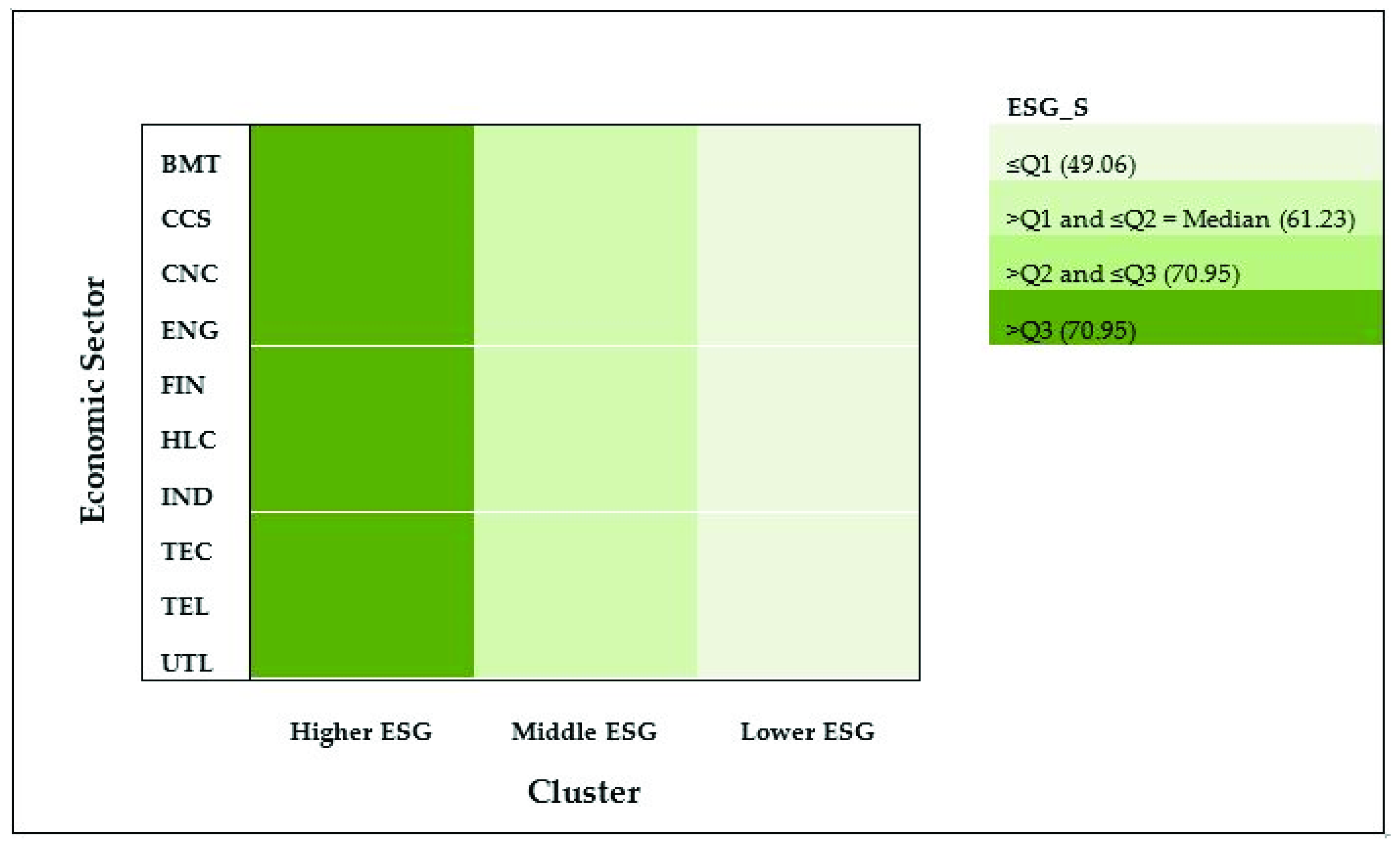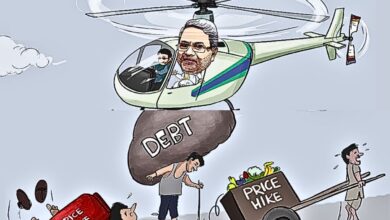What is E.S.G., why E.S.G. storytelling matters to companies of all sizes, and how to develop an E.S.G. strategy, 5 ways.

What is E.S.G., why E.S.G. storytelling matters to companies of all sizes, and how to develop an E.S.G. strategy?
Although E.S.G. is much more than just a P.R. stunt, communicators are important to its success.
In particular, for publicly traded corporations, the emergence of environmental, social, and governance (E.S.G.) has established the new benchmark for corporate leadership.
According to a global poll done in December 2020, 88 percent of publicly traded companies globally have E.S.G. measures in place, followed by 79 percent of venture- and private equity-backed businesses and 67 percent of privately held businesses.
E.S.G. Investing and Analysis
The importance of E.S.G. analysis in the investment process is on the rise. Gaining a deeper understanding of the businesses they invest in is a major driver for investment professionals to evaluate environmental, social, and governance (E.S.G.) issues like part of their financial analyses.
E.S.G. Investing: What Is It?
Environmental, Social, and Governance is the abbreviation for E.S.G. Investors are using these non-financial aspects more often like a part of their analytical process to spot major risks and expansion prospects.
Although companies are increasingly disclosing information in their annual report or in a separate sustainability report, E.S.G. measures are not often included in required financial reporting.
Numerous organizations are working to create standards and define materiality to make it easier to incorporate these factors into the investment process, including the Sustainability Accounting Standards Board (S.A.S.B.), the Global Reporting Initiative (G.R.I.), and the Task Force on Climate-related Financial Disclosures (T.C.F.D.).
Why has environmental, social, and governance (E.S.G.) investing become more popular, and what does it entail for the financial sector? To find out more, look through our E.S.G. Investing Guide.
Key E.S.G. Elements
E.S.G. factors don’t have a precise classification. It probably be difficult to categorize an E.S.G. issue as just an environmental, social, or governance concern because E.S.G. components are frequently interconnected, as demonstrated in the example below.
The employee turnover rate for a company, for example, can be measured, but it can be challenging to put a monetary value on these E.S.G. elements (e.g., what the cost of employee turnover for a company is).
Environmental
Conservation of the natural world
– Climate change and carbon emissions
– Air and water pollution
– Biodiversity
– Deforestation
– Energy efficiency
– Waste management
– Water scarcity
Social
Consideration of people & relationships
– Customer satisfaction
– Data protection and privacy
– Gender and diversity
– Employee engagement
– Community relations
– Human rights
– Labor standards
Governance
Standards for running a company
– Board composition
– Audit committee structure
– Bribery and corruption
– Executive compensation
– Lobbying
– Political contributions
– Whistleblower schemes
E.S.G. offers a framework for businesses to record their work and the resulting impact on environmental, social, and governance elements, in contrast to the “corporate social responsibility” paradigm.
E.S.G. reporting is currently required for listed companies in several countries, including Hong Kong. But is E.S.G. important only for publicly traded companies?
Is E.S.G. reporting by itself enough to successfully share businesses’ E.S.G. actions with a lastly dispersed community of stakeholders?
1. Businesses of every size can benefit from E.S.G. storytelling
The correct E.S.G. story ensures brand relevance and marketability at a time when customers are becoming more concerned about sustainability problems. According to the C.G.S. Survey, two-thirds of consumers would spend an additional 25% simply to buy green items.
According to Cone Communications’ research, such improved brand relevance gives corporates a great lasting reputation for 92 percent of consumers and brand loyalty from 88 percent of them, signifying increased marketability potential.
Companies that have strong E.S.G. values have a better chance of attracting and keeping great talent.
One in three employees would like to work for an organization that displays responsibility towards all stakeholders, according to Mercer’s 2020 Global Talent Trends survey.
Since the company’s E.S.G. initiatives would highlight its corporate values that correspond with its stakeholders’ ethical consumption beliefs and its long-term commitment to producing value for them, E.S.G. storytelling establishes an emotional connection between corporations, customers, and employees.
2. E.S.G. is not merely a label.
Globally, E.S.G. investment is gaining steam, and according to a forecast from Broadridge Financial Solutions, by 2030, the value of E.S.G. assets could reach $30 trillion.
There are growing worries about companies using the E.S.G. designation superficially to entice investors’ money, given the hot money in the E.S.G. industry.
Over half of investment funds with E.S.G. labels had exaggerations, according to InfluenceMap, a nonprofit.
E.S.G. reporting usually comprises a variety of technical data and industry-specific terminologies that are difficult for stakeholders to understand. Technical information provided by experts is often unintentionally misconstrued, rendering it useless.
One-third of poll participants at the Asian Financial Forum 2022 even cited unclear E.S.G. rules like the biggest barrier to E.S.G. decision-making.
E.S.G. storytelling may fill up the gaps by placing E.S.G. projects into broadly applicable contexts and views.
There are several ways to tell an E.S.G. story. The 2030 S.D.G.s Game, a straightforward multiplayer card game, can be used to discuss and study even important goals as ambitious as the Sustainable Development Goals.
E.S.G. storytelling is similar to traditional business storytelling in several respects. Integrating E.S.G. elements into corporate narrative, being open about companies’ E.S.G. policies, and communicating the effects of company operations on E.S.G. issues authentically are all things communicators can do.
3. A cost of not using real E.S.G. storytelling
Corporates that have implemented successful E.S.G. programs may contribute to maintaining a favorable public image, although greenwashing concerns could still be problematic.

For example, B.N.Y. Mellon recently paid a $1.5 million fine for presenting false information about E.S.G. investments.
According to a media source, a Brazilian meatpacking company, J.B.S., was forced to deal with the potential consequences of having investment money withdrawn and losing major customers when it was disclosed that it had produced more carbon emissions than was required by E.S.G. programs.
Companies that find out to not have really implemented E.S.G. policies face public criticism and severe P.R. issues.
According to a 2017 Cone Communications study, roughly 80% of customers would cease using products and services from companies that were found to have behaved against their moral convictions. This suggests major financial losses.
E.S.G. storytelling provides a clear solution to customers’ concerns.
According to the same Cone Communications report, companies could allay concerns about greenwashing, maintain corporate integrity, and win the trust of nearly 90% of consumers by providing a precise, specific, and detailed narration of corporate responses to E.S.G. issues that is supported by statistical data and verifiable evidence.
Overall, E.S.G. is much more than just a P.R. exercise, but communicators still have a crucial role to play because they are charged with developing a narrative that gives life to businesses’ E.S.G. initiatives, forges emotional connections with stakeholders based on shared values, and averts potential problems and crises that would destroy a brand.
The Difference Between E.S.G. and Sustainability and Why it Matters
E.S.G. and sustainability are often used interchangeably. Although similar, the meanings are different. Having a shared understanding of your business will facilitate communication and assist in directing resources and personnel toward shared aims.
Sustainability: What Is It?
Sustainability is a broad concept that includes all of a company’s initiatives to reduce its adverse effects on the environment.
The phrase “triple bottom line” (people, planet, and profit) is often used to describe the idea; however, governance is not always mentioned. It is occasionally conflated with just environmental and climate issues.
An “inside-out” perspective has been used to describe it. However, some people find it difficult to get agreement on measurable objectives and accountabilities because the concept is wide and often applied generally.
The definition of sustainability for internal and external audiences aids many businesses in setting priorities, coordinating suitable reporting structures, and directing their overall transition to sustainable practices.
This thorough understanding facilitates communicating sustainability in a consistent, coherent manner to stakeholders.
Describe E.S.G.
Environment, Social, and Governance, or E.S.G., is a framework that is data-driven and investor-focused. The three dimensions stand out, and each has quantifiable elements connected to separate raters and rankers.
Across these aspects, there is a strong focus on controlling risk, reputation, operations, and capital. An “outside-in” strategy is another name for it.
Since the financial effects on the firm are prominent, reporting is a key component. The notion of “E.S.G. investment” has grown rapidly, and businesses all over the world are embracing it like a value-creating strategy.
(McKinsey) Public companies must be able to tell a convincing E.S.G. story, and at the very least, they must publish an annual report on their progress.
E.S.G. Measures
Metrics E.S.G.
Different E.S.G. metrics are not calculated or presented using a defined methodology. Investors can handle E.S.G. factors using a number of analytical techniques and data sources, including weighting based on client interest and potential value.
A full picture of E.S.G. risks and opportunities can be formed by comprehending the relative benefits and limitations of several indicators.
A filter symbol
The Business Model for Sustainable Investment
Learn how to enhance frameworks and standards, comprehend the obstacles to mainstream sustainable investing, and assess the quality of E.S.G. data.
Why Your E.S.G. Strategy Must Include Strategic Storytelling
We firmly believe that the narratives you provide about your brand must always mirror the conversations taking place within your company.
As the team leader of our agency’s P.A.N. id team, which promotes diversity and social equity, I’ve had the honor of witnessing our team’s enthusiasm for a wide range of pressing problems.
As the Head of D.E.I., I often consider how our work relates to more general E.S.G. themes and how we may genuinely and effectively convey the story of our development.
It is not a novel idea to analyze environmental, social, and governance (E.S.G.) variables in order to show a company’s growth potential; business analysts and investors have been doing so for years.
While the evaluation process is still developing, it is now commonly acknowledged that a strong E.S.G. position can add value and influence the public’s perception of a company’s story in a favorable way.
E.S.G. has received more attention in recent years as businesses carefully consider both the financial benefits it may provide and the value it can add to the entire brand story.
It’s a perspective that keeps gaining ground like society assesses and reassesses the role of business in setting the agenda for sustainability and social equality.
Here we have P.A.N. Strategic Consulting Group.
Environmental issues have historically attracted the most discussion and attention throughout the history of E.S.G., in large part because of their global consequences.
However, in recent years, social and governmental elements have gained more respect, particularly like the U.S. navigates the public discussion of racial and socioeconomic inequities.
E.S.G.’s brand story has the advantage of being simple in its message: companies can and should be better. E.S.G. is complex when the layers are removed.

It can include programs that address a variety of issues, including gender pay inequalities, clean energy, diversity, equity, and inclusion, carbon emissions, climate change, employee and worker rights, and corporate social responsibility.
For businesses, advancement and success depend heavily on how you can tie your corporate story to a bigger E.S.G. strategy.
According to recent Price water house Cooper’s research, 83 percent of customers believe that businesses should actively influence E.S.G. practices.
The days when E.S.G. initiatives were merely “nice to have” or even a key differentiation are long gone.
Brands must do this job or else run the long-term risk of suffering a serious disadvantage. Along with focusing on their task, individuals must learn how to share their tales.
Since every company and brand is different from the other in some way, the way each one presents its E.S.G. narrative will and should differ from the way each one chooses to tell its story.
Although there may be some strategic goal overlap, the strategy for E.S.G. storytelling should be based on the brand’s true character. Consider:
What values does the brand promote?
Which E.S.G. components naturally relate to the brand? Which components need proactive work?
What values do employees and the brand share?
How has the emphasis on E.S.G. changed recently?
How are these solutions strategically conveyed in a unified message?
There is no one paradigm that works for everyone; it takes sincere consideration, deliberate action, and continual work.
The good news is that many businesses already have E.S.G. components integrated into their operations.
Identifying these components, figuring out how they work together, and creating a progress plan that builds on what you already have while filling in the gaps are the first steps in developing a sound approach.
While the evaluation process is still developing, it is now commonly acknowledged that a compelling E.S.G. narrative may add value and influence the public’s perception of a firm in a positive way.
E.S.G. is a journey, and part of the story involves merely taking steps to improve performance. Knowing and recognizing your company’s strengths and potential growth areas is appropriate. Not everything can be done overnight.
Thus it is best for a business to let the brand story express the long-term commitment while establishing and growing brand loyalty.
Depending on the audience or stakeholder, speaking to E.S.G. commitments will demand different considerations.
Internal audiences’ (i.e., employees’) perceptions of a company’s E.S.G. commitment are crucial because they have the power to change emotional behavior, which in turn has the power to change the overall company culture.
Additionally, it’s crucial to strike the correct mix between spotlighting the company’s employees who represent the E.S.G. ideals and affirming and reiterating where a company stands on its promises.
Internally, it’s crucial for individuals to comprehend that they are taken into account in the general strategy.
This is accomplished in part by taking concrete steps, such as establishing areas inside an organization that allows for access and opportunity and finding the right words to convey those efforts, so they are understood at all organizational levels.
This initiative is more important than ever as firms get ready to hire a new labor generation.
“Millennials continue to advocate for a world where businesses and governments mirror that same dedication to achieving positive change for society, putting people and planet ahead of profits,” according to the Deloitte Global 2021 Millennial and Gen Z Survey.
It should not be a surprise that as the workforce changes, so will the expectations for E.S.G.’s success.
From the outside, E.S.G. has developed into a new method for clients, partners, and potential clients to decide whether it makes sense to work with a company or brand.
By creating strong linkages between their internal work and the external audiences it will resonate with, businesses can draw in and keep these audiences.
Your target market is also your critics since they have the power to pressure businesses and brands to uphold higher standards. Your brand’s and E.S.G.’s story can help you persuade potential customers that working with you is in their best interests.
One element of strategic storytelling is the story. The quality of the story depends on how well the brand communicates it, even though the story itself comes first, together with all of its E.S.G. components. The strategy enters the picture at this point.
Brands should be careful to match the E.S.G. story’s content with its delivery methods.
Although audiences value and appreciate E.S.G.’s work, they can be severe when it comes to the story’s presentation.
E.S.G. has become a brand expectation in recent years, and with that expectation have come allegations of greenwashing and virtue signaling.

A brand must be straightforward and transparent about the work they are doing without exaggerating its progress or its value in order for an E.S.G. story to succeed. This frequently entails being open about areas where work needs to be done.
E.S.G.’s brand story has the advantage of being simple in its message: firms can and should be better.
Be aware of the smaller elements when your company develops its E.S.G. story, including who tells it, how it’s told, where it’s shared, and which partners contributed to it.
These components are essential to the approach and must be carefully studied in light of how they interact with the narrative structure.
Understand that you won’t always get it right. There will be a mistake, whether it’s a private error or a public one. Your story also includes that error and the course of action you take to fix it.
Holding businesses accountable through measurement also gives them the space and chance to demonstrate improvement.
Additionally, it’s increasingly becoming necessary for stakeholders who want to comprehend an organization’s E.S.G. approach.
Businesses now routinely use data to demonstrate their progress. Hard data, however, frequently only reveals a portion of the brand story.
Consider how qualitative data can support and enhance the quantitative conclusions when choosing the E.S.G. reporting strategy. Give your results and impacts the chance to speak for themselves.
There is no need to exaggerate accomplishments when advancement and growth are at the forefront of E.S.G. practices.
The need for businesses to show how their operations are in line with and supported by E.S.G. commitments will only grow if dialogues, news coverage, and data are any indication.
Understanding a company’s value proposition better can have a positive impact on a variety of business outcomes. Presenting an E.S.G. narrative that is genuine and clear will ultimately help to position your firm as a market leader and a company that cares.
the following five main ideas:
Examine your stance with E.S.G. at the center. Consider carefully the E.S.G. components that are both distinctive and real to you when you think about your current and downstream competitors.
Analyze the different segments of your audience. E.S.G. affects every aspect of the company, which also implies that it communicates with various audiences using various messaging.
Create the tactical narrative. You don’t have to have everything thought out at once because your E.S.G. story is a process. Tell the truth about your current successes and your long-term goals.
Find your distinctive voice. Only half of the strategic storytelling involves the story itself. Tone, platform, authors, collaborators, and employee advocates all contribute to a plan that must be consistent with the narrative.
By setting goals, track your progress. While tracking your success in relation to your brand values is critical, data-driven goals are equally crucial.
UNCOVERING YOUR ESG STORY
Business leaders that are astute understand that comprehending environmental, social, and governance (E.S.G.) elements is essential to predicting how a firm will perform in the world of today.
The need to assess enterprises through a fresh lens that takes into consideration problems like climate change, social inequalities, resource shortages, and technological progress gave rise to the idea of E.S.G.
Leaders need to be ready to examine their strategy via an E.S.G. lens as organizations try to attract finance.
In February 2021, Bloomberg Intelligence discovered that by 2025, E.S.G. assets might represent $53 trillion, or one-third of all assets managed globally. Eyes will be on E.S.G. more than a trend or niche as the world finances a green recovery to help evaluate risks.
Although a marketing strategy shouldn’t be the first step in your company’s E.S.G. strategy, marketers still have a significant role to play.
You are an important team member when figuring out your E.S.G. story because you have competitive advantages, industry knowledge, and good communication.

Your team will be able to recognize possible weaknesses through E.S.G. and discover what the firm is presently doing to address them as strategic opportunities for value creation, as well as how it might improve.
I’ll concentrate on how to find your story in this article so that you can create your first E.S.G. report. Then, I’ll go into more detail on creating your E.S.G. communication plan in subsequent posts.
I advise reading ESG 101 from M.S.C.I. and being acquainted with the Sustainability Accounting Standards Board’s (S.A.S.B.) sustainability-related disclosures to obtain a foundational understanding of E.S.G.
ATTAIN EXECUTIVE SUPPORT AND FORM A DIVERSE TEAM
The success of your E.S.G. strategy depends on the support of your C.E.O. and C.F.O.
First, every aspect of the business is impacted by E.S.G. You’ll need to consult with a variety of internal specialists and assemble a team of leaders with a wide range of pertinent experience.
Your C.E.O. and C.F.O. can help you secure both by opening doors. Other leaders could be reluctant to offer sensitive information and devote their time to this endeavor that doesn’t originate from the top.
Decision-makers from Risk Management, Compliance, Research and Development (R&D), Human Resources (H.R.), Business Development, and Sustainability would make up a strong E.S.G. team.
This team can access information on the C-Suite, operations, legal, investor relations, compliance, human resources, and marketing.
Second, an E.S.G. lens has the ability to reveal important business risks and present opportunities to resolve them.
The business may then demonstrate to its stakeholders and potential investors how it is setting the standard for its sector.
You will have a C.E.O. who can confidently describe the difficulties your firm is best prepared to manage with a plan in place and knowledge of what needs to happen once you have a leadership team on board.
Companies who do not see the value of an E.S.G. lens or who are unable to acknowledge and promptly rectify their deficiencies run the danger of disappointing (to put it mildly) key stakeholders and frightening away potential investors.
Five excellent techniques to improve your ability to pitch to the C-suite are provided in this I.N.K. article.
ALLOCATE TIME FOR A SERIOUS PROCESS.
Finding and reporting E.S.G.s takes time. Your team must establish distinct roles, examine internal resources, consult with pertinent parties, draft and review (and then draft and review a few more times). Establish a reasonable budget and timetable at the outset to help manage expectations.
Depending on the size of the firm and the team’s capacity, the schedule for your first E.S.G. report might be anywhere between three and nine months. Even though it takes a lot of time, developing a successful strategy is worth the effort.
Prioritize and establish material E.S.G. issues.
You must decide which issues are most important and give them priority if you want your E.S.G. program to be lastingly effective.
Identifying material concerns typically comes down to answering these two questions:
1) Is it likely that this problem will have a substantial effect on the company’s growth, expenses, or risk?
2. Do my stakeholders anticipate me to take action on this?
Start by considering a variety of potential E.S.G. issues; the S.A.S.B. Standards are a good place to start.
After that, consult your internal specialists to provide responses to the above queries. When identifying value drivers, your client-facing teams, such as the business development and customer acquisition teams, are a frequently ignored secret weapon.

They may also assist you in using your customer knowledge to position and prioritize E.S.G. topics. Never forget that marketing is the best at understanding the requirements and values of stakeholders.
SPECIFY THE ESG GOALS
Set the bar after your team is informed of the company’s significant E.S.G. challenges.
For instance, a tech business may decide to set a goal of having 40% female leadership positions by 2025 in order to encourage women’s advancement within the organization after realizing that a lack of diversity is hindering its ability to retain talent.
A clean energy business may set a goal to extend the usable life of a wind turbine by 15% by 2030 after identifying forced labor and supply chain congestion as key risks.
A social media firm may instantly form teams to use A.I. to detect deep fakes and refuted claims after realizing that there is growing mistrust and attention on content control.
The purpose of setting E.S.G. goals is to push your business to perform better. Also, keep in mind that the need to address stakeholders’ growing skepticism led to the creation of E.S.G. Be critical and concentrate on achieving a few KPIs.
Underdelivering on your promises can have the exact opposite effect of what you intended.
GET INFORMED BY YOUR WHOLE ORGANIZATION
Start by removing the layers of your organization’s approach to these topics as you gather information on value drivers.
Telling your E.S.G. story involves putting all the elements together to tell a comprehensive sustainability story that communicates to stakeholders and sets you apart from rivals, much like your marketing plan.
Having worked in a huge, global corporation, I can attest that the majority of the time was spent locating the appropriate person to address questions.
It is up to you to know how to gather the relevant information from the right sources at the appropriate times because many of the foundational elements of your E.S.G. strategy may already be in place. From question-asker to question-master, you must transition.
MAKE THE REPORT PERSONALIZED AND SIGNIFICANT
Use your company’s opportunity to explain how its sustainability strategy connects to its business objectives and financial success in an E.S.G. report.
A program to teach children about wind energy may be offered by a provider of renewable energy.
Promoting how this is a fantastic investment in education is fantastic. Emphasizing how this is a chance for crucial community relations growth in a sector where securing land agreements depends on local support is equally crucial and transparent.
SPREAD THE WORD BEYOND YOUR ESG REPORT
I’ve authored one or two white papers, so I’d love to think that our long-form efforts were useful to all of our stakeholders.
Since there is a lot of information available, it is your responsibility as a communicator to make it understandable, digestible, and relevant for a range of audiences.
Share your net-zero goals with clients and other stakeholders by using your various channels, such as your blog, social media accounts, and earned and paid media.
Your DE&I, talent development, and other internal communications activities are efficiently communicated to employees through company newsletters.
PERFECTLY ALIGNED AND ACTIVE
Due to their high visibility in E.S.G., businesses in the tech and energy sectors should expect to benefit much from doing it well and face greater risks if they choose not to.
Your company will confidently move forward, well-aligned on the right foot with an informed, genuine, and persuasive E.S.G. report in hand.
Strong E.S.G. Practices Can Benefit Companies and Investors: Here’s How
Betsy Atkins, an experienced board member, makes a strong case for proactively tackling E.S.G. challenges through formal corporate governance principles.
The primary priority for business management and boards should be environmental, social, and governance (E.S.G.) challenges.
A public stance on E.S.G. concerns was once used as a public relations strategy. However, in the quickly evolving corporate environment of today, paying attention to E.S.G. problems is increasingly important for long-term competitive success.
Major institutional investors are expressing their expectations that the companies they own will adopt aggressive E.S.G. policies and messaging in response to this realization.
“A company’s ability to manage environmental, social and governance matters demonstrates the leadership and good governance that is so essential to sustainable growth,” Blackrock C.E.O. Larry Fink wrote in his annual letter to C.E.O.s.
For this reason, we are increasingly integrating these issues into our investment process.
State Street Global Advisors (S.S.G.A.) put this philosophy into practice during the 2017 proxy season by voting against the re-election of directors at 400 businesses that, according to S.S.G.A., made no meaningful attempt to appoint women to their all-male boards.
Beyond gaining the approval of institutional shareholders and building a positive public relations narrative, there are benefits to proactively addressing E.S.G. issues.
A good E.S.G. program can facilitate access to significant financing sources, strengthen corporate brands, and foster sustainable long-term growth that is advantageous to both businesses and investors. This is how:
1. Effective E.S.G. initiatives can boost stock liquidity.
Massive sums of money are being invested in firms that proactively govern and operate in an ethical and sustainable manner by both individual and institutional investors.
double-digit growth rates are being actively achieved in sustainable and impact investing.
In fact, the US SIF Foundation reports that the total amount of U.S.-domiciled investments made utilizing sustainable, responsible, and impact (S.R.I.) strategies hit $8.72 trillion, up 33% from 2014 and increasing 14 times since 1995. This amounts to around 1 out of every 6 dollars managed.
Companies are measured and ranked according to E.S.G. criteria in relation to their industry peers by indexes created by investment research and consultancy businesses like Sustainanalytics and M.S.C.I.
These indexes’ investment funds and exchange-traded funds (ETFs) are generating trillions of dollars to invest in businesses that follow ethical E.S.G. principles; these are long-term investors who might increase demand for your shares.
The fact that many investment companies include E.S.G. assessments in their portfolio risk assessments is a solid indication that money will continue to flow into businesses with effective E.S.G. programs and practices.

2. Competitive value can be unlocked by E.S.G. activities.
Businesses are better able to spot strategic opportunities and overcome competitive problems when they understand the value of adapting to changing socioeconomic and environmental conditions.
A company’s competitive moat compared to other players in the industry can be widened through proactive and integrated E.S.G. practices.
This was something that Starbucks (Nasdaq: S.B.U.X.) discovered while attempting to increase its market share in China. Years after first entering that market, Starbucks had trouble gaining traction with its plans for growth.
When they started providing healthcare to the parents of their employees, they found the solution. After they did that, sales growth exploded, and today Starbucks has 2,000 locations in one of the world’s fastest-growing markets.
Executives who improve working conditions, diversify their teams, give back to their communities, and support environmentally friendly policies help to build the company’s reputation.
Particularly when millennials go into the workforce, as consumers and as investors, they reward ethical company behavior with loyalty.
3. Proactively addressing E.S.G. issues can deter activists.
Activists have always used governance flaws as a weapon in proxy fights and campaigns against corporations, but lately, they’ve been focusing more on management teams and boards that don’t take a proactive approach to possible social or environmental issues.
Companies that proactively handle E.S.G. concerns can lead the industry and protect themselves from activist intervention at the same time.
The number of women on the board of Wynn Resorts (Nasdaq: WYNN) has recently increased from one to four, reflecting the company’s commitment to gender diversity.
Wynn is now in the top 40 S&P 500 firms for female board representation, with a board that is 36% female.
Don’t give up if an ESG-focused activist does target your company. Hedge funds and activist investment companies like ValueAct Capital and Jana Partners are starting their own E.S.G. funds.
Many of these investors are enthusiastic about working with businesses to create E.S.G. guidelines that unleash the lastly indicated long-term value.
To continue the firm’s transformation to clean and renewable energy sources, Jeff Ubben, C.E.O. of ValueAct Capital, has joined the board of the energy giant A.E.S. Corporation (following the divestiture of its coal assets).
4. Stickier investors are E.S.G. investors.
Values-based investors, E.S.G. investors, realize that change takes time and are more interested in what will happen over the next ten years than they are in what will happen this quarter.
Since they are more interested in creating long-term value over a number of years than in selling the stock in the near future for a “sugar high,” investors who incorporate E.S.G. into their mandate often collaborate with companies to strengthen them.
5. Firms that uphold strong E.S.G. values are more probable to draw and keep the top talent.
Environmental and social responsibility are specially important to millennials, and they care passionately that the companies they work for (and the businesses they support) uphold ideals that are similar to their own.
Employees who are committed to the company, who show loyalty, and who are treated with respect foster intangible goodwill that enhances the workforce’s overall productivity.
Ideal Techniques
It’s crucial to follow specific best practices for measuring and bolstering the company’s E.S.G. program in order to fully benefit from taking a proactive stance on E.S.G. issues:
Determine the relevant E.S.G. standards for your sector and business.
Companies shouldn’t aim to please everyone when creating an E.S.G. policy framework. Instead, choose three to five E.S.G. criteria that can be measured, are important to your company’s operations and stakeholders, and are consistent with your corporate goals.
For examaple, an oil and gas company engaged in fracking should assess the management of water and waste and the effects on finite natural resources.
Social training on anti-harassment and racial sensitivity will improve the corporate brand and make customers feel welcome if your business is service-focused like Starbucks.
In order to attract and keep the best employees, Wynn Resorts, a company that provides high-end services to customers, focuses on employment programs like workplace safety and sensitivity, gender equality, a Women’s Leadership Forum, and diversity and inclusion.
The environmental effects of Wynn Resorts’ substantial hotel properties are taken into consideration. Many of their properties have LEED certification, and they recycle 95% of the water they use.
One of the most environmentally aware planned developments in Las Vegas, Paradise Park, a multi-use development from Wynn Las Vegas, will be powered entirely by renewable energy from a 160-acre solar energy complex.
Investigating industry rankings within a major sustainability ranking index is a useful tool to compare your company’s E.S.G. framework to those of your competitors. Nonprofit global advocacy groups that score and categorize business E.S.G. programs include:
-Initiative for Global Reporting (G.R.I.)
-Board for Sustainability in Accounting (S.A.S.B.)
-Rankings of the Global Initiative for Sustainability (G.I.S.R.)
These organizations analyze a wide range of factors for each industry, including the effects of climate change, the scarcity of natural resources, supply chain management, labor practices, political contributions, board composition, and workplace diversity and inclusion.
E.S.G. advisory companies like Sustainanalytics and M.S.C.I. are just two examples. Reviewing the governance scores that proxy advisory companies like I.S.S. and Glass Lewis provide to your company probably be another helpful benchmark because their influence over institutional investors has increased in recent years.
Attempt to be included in pertinent E.S.G. indices.
As was already noted, adding your company’s shares to E.S.G. index funds and/or ETFs can increase demand and liquidity.
Have your general counsel get in touch with three or four E.S.G. funds or ETFs to learn more about their requirements for inclusion after your organization has determined the components of its E.S.G. framework (and exclusion).
Choose the index that most closely aligns with your corporate strategy and the concerns of the shareholder base you consider to be your greatest long-term investors.
To choose which companies to include, the majority of E.S.G. capital pools use their own distinct set of inclusion and/or exclusion criteria.
Companies must, for instance, be committed to environmental sustainability, support universal human rights, ensure excellent supply chain labor standards, combat bribery, and mitigate and adapt to climate change in order to be eligible for inclusion in the FTSE4Good Index Series.
However, that series does not include businesses that have been identified like being involved in the production of tobacco, nuclear weapons, or firearms.
Stay faithful to your tale like you tell it.
The next stages are to set measurements, measure them regularly, and disclose progress publicly when your organization has chosen the proper criteria for its E.S.G. framework; otherwise, you risk being accused of “greenwashing.”

Companies that engage in “greenwashing” provide a public relations narrative emphasizing high standards for human rights and environmental protection but fail to act on these promises.
As the S.E.C. increases its demands that businesses provide C.S.R. and sustainability reports, it will be more difficult to get away with greenwashing.
Investors use a variety of metrics to identify whether a company is faking its E.S.G. principles or actually implementing them into its business activities.
Companies that are sincere about carrying out their E.S.G. policies give the C.E.O. and general counsel precedence in this area and link compensation to E.S.G. measures.
They freely share their E.S.G. goals with all stakeholders, and their progress toward achieving them, through the annual C.E.O. letter, annual reports, internal corporate communications, and/or annual sustainability reports posted on the company website.
The Bottom Line
No matter whatever organizational principle you choose—Sustainability or E.S.G.—crucial it’s to create a shared understanding both within your company and with outside audiences.
Positive effects result from this clarity because you can determine what is important to your company and to your external stakeholders and then measure, support, and convey it. The company’s efforts are reinforced, and comprehension is increased by consistency in communications.
It’s important that these initiatives are starting to bear fruit. Additionally, corporate sustainability and E.S.G. are gaining attention and raising their profile quickly.
edited and proofread by nikita sharma




